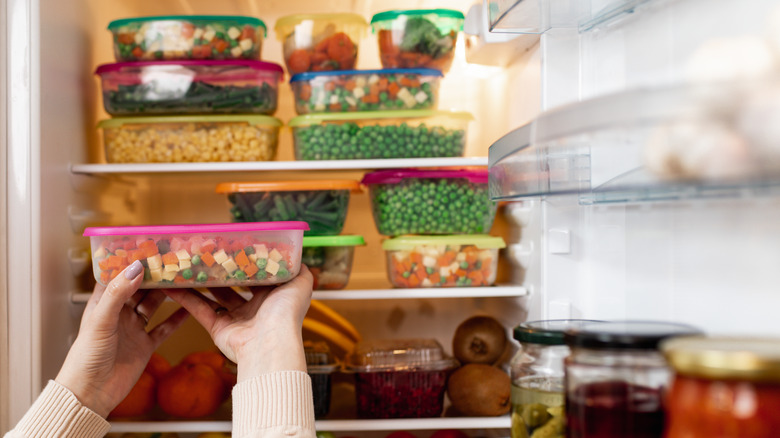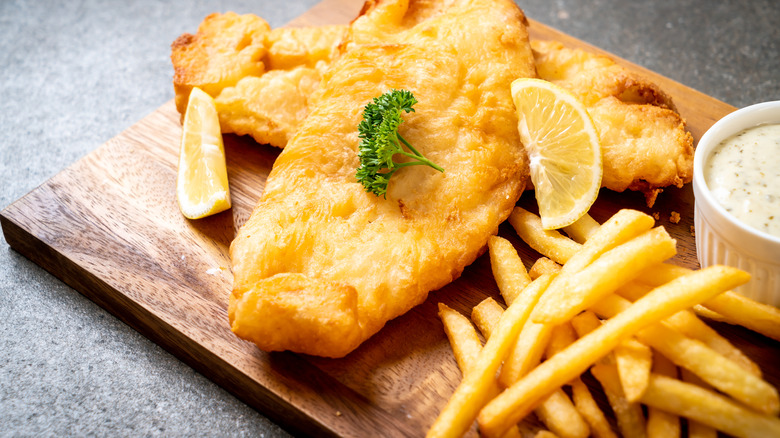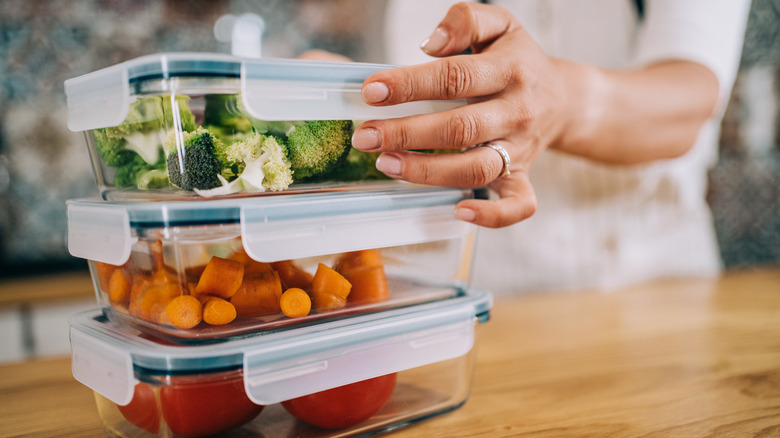Is Condensation In Food Containers Something To Worry About?
There's something unsettling about pulling out last night's leftovers and finding the lid of your food container covered in drops of water. It's not dirty, but it wasn't there when you put your food away, and all that extra moisture just feels concerning. However, if this brings up food safety worries, then have no fear. You've just fallen for one of the most common leftover myths that has been around for too long. That moisture doesn't increase the chances of your food going bad, but it might be ruining its texture.
The reason that there's water on your storage containers in the first place is condensation. When your food is still cooling down, it's releasing a lot of steam and moisture into the air. When you put it into a container too early, moisture is trapped inside. As it cools, it forms into water drops on the lid.
While it might be a concerning sight, there are no added health risks posed by this moisture. Guy Crosby, adjunct associate professor at the Harvard T.H. Chan School of Public Health and certified food scientist, told Allrecipes that the only time that water could add a pathogen risk is when the lid or food is carrying dangerous bacteria that could be transferred by the water droplets. That doesn't mean that there aren't times when you'll want to let your food cool before putting it away.
When you need to worry about condensation in food containers
The only time that water in your food containers poses a real risk is when dealing with fried foods. This is because moisture can have a detrimental effect on fried food's texture.
Ever wonder why your favorite fast food french fries are soggy by the time you get them home? Those fries are releasing moisture as they cool down inside the bag. If you have the top of the bag rolled up tight, it traps the moisture inside and causes those crispy fries to go limp.
That moisture is the enemy of just about every crispy and fried food. While there's no need to worry about any foodborne pathogens in water droplets, they will ruin the texture of these foods. Having those drops of water fall on your food isn't good for their crunchy exteriors, but they're also a sign that there's too much moisture inside the container. Thankfully, there are a few tricks to save your food's texture.
How to avoid condensation in food containers
One of the great ironies of dealing with leftovers is that the better your storage container, the worse the condensation will be. The best food storage containers will give you a tight seal to keep out airborne pathogens, but they'll also trap that moisture inside. The easiest way to avoid this is to let your food rest in the refrigerator uncovered for up to an hour. This will give it time to cool and release as much moisture as possible. It will also rapidly cool the food so that it spends as little time as possible in the bacteria "danger zone" where bacteria easily reproduce, according to the Mayo Clinic.
The other easy way to let your food cool and let off its moisture safely is to buy food storage containers with built-in vents. Just put your food away as usual and leave the vent open. Once the food has cooled down, you can easily close the vent. It also creates less exposure to the air so it should minimize the opportunities for any airborne pathogens to migrate to the food as well.


